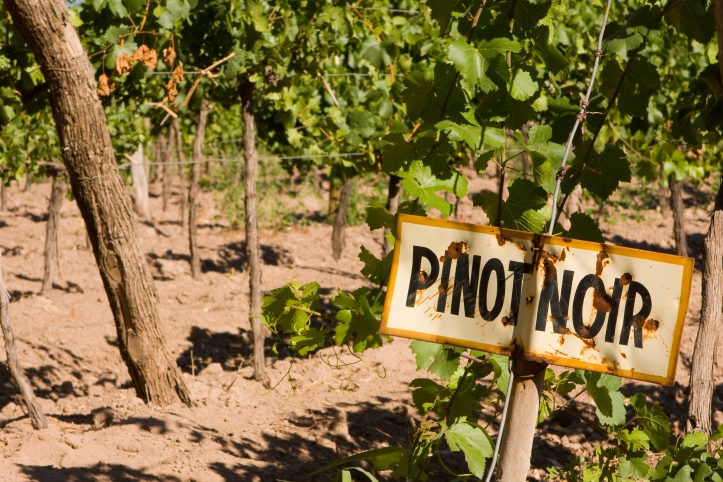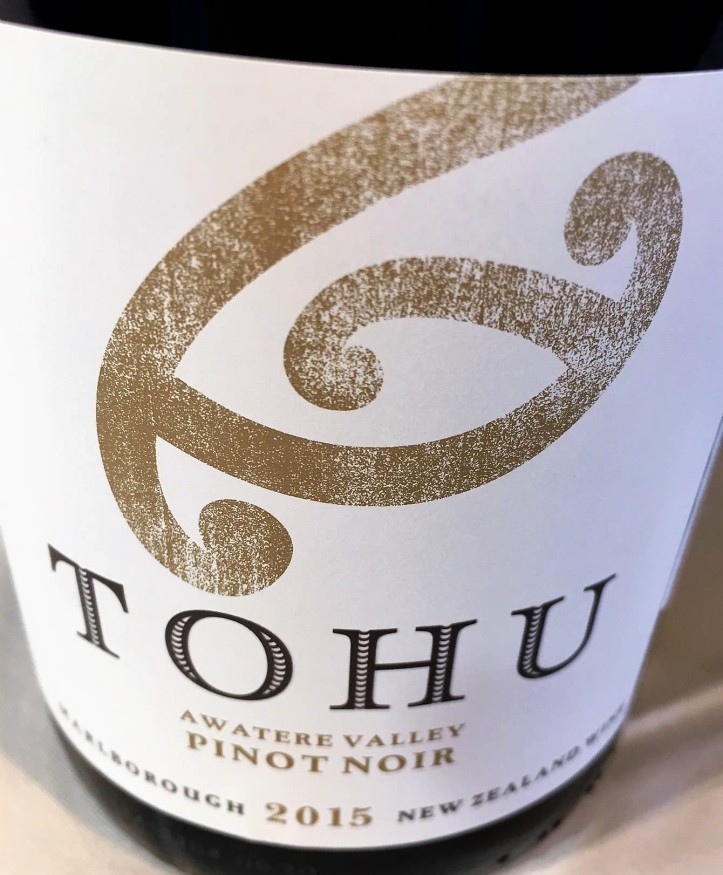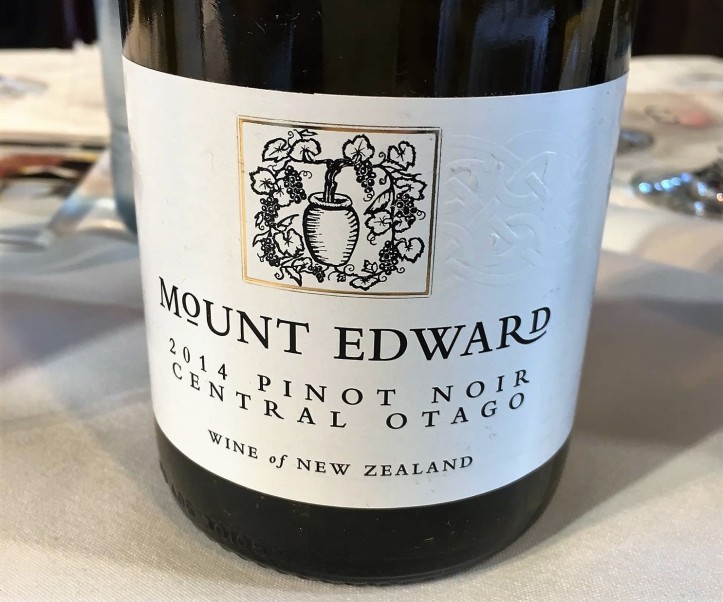
In the aftermath of last week’s “blizzard” I was pleased to attend the Made in New Zealand Pinot Noir tasting seminar hosted by New Zealand Wine. I use the term blizzard in quotes because, contrary to all meteorological predictions, New York City caught just a glancing blow of the storm that hammered our neighbors to the north. Not that it didn’t affect us: we certainly got enough snow to make navigating the city a messy proposition. Thanks to the subway I got to Battery Park City (at the southern tip of the island) with little trouble, emerging from the station to greetings of brilliant sunshine and whipping winds. By the time I arrived at Pier A Harbor House, I truly appreciated the warm welcome of the New Zealand Wine ambassadors – not to mention the steaming cup of coffee they offered, courtesy of the Bay Espresso Organic Coffee Company. (Apparently wine is just one of many beverages the Kiwi artisans have taken to: coffee and craft beer are among the others.)
After thawing out, I found a spot at one of the tables and settled in for some Pinot knowledge and deliciousness. The room was very well organized with about a dozen round tables, each with just four places set (so that everyone would have an unobstructed view of the panelists and the presentation slides.) I have been to many events like this one where the tables and place settings are crammed so close together that it’s distracting: one false move and those wine glasses tumble over like dominoes! It was a real pleasure to have ample room to move around, to be able to devote 100% attention to the subject matter at hand. Bravo to those who engineered the room set-up!

The Panel
Our emcee for the guided tasting was David Strada, marketing manager for New Zealand Wines USA. After providing some background on the New Zealand wine industry, he introduced the presenters who would walk us through the ten wines:
- Michael Henley, CEO of Trinity Hill Wines and an executive member of the Gimblett Gravels Winegrowers’ Association.
- Brett Feore, wine director and sommelier at The Musket Room, a fine dining establishment in New York City that focuses on New Zealand cuisine and wine.
- Joe Czerwinski, managing editor at the Wine Enthusiast, who specializes in the wines from Australia, New Zealand, and France’s Rhône Valley.
- Laura Williamson, Master Sommelier and wine director at the Mandarin Oriental, New York City.
The Wines
We sampled a total of ten wines, beginning our virtual tasting tour in the northern region of Hawke’s Bay and, with each successive wine, traveling southward until we reached the area of Central Otago.

Trinity Hill Pinot Noir Hawke’s Bay 2015 (13% abv; retail approximately $20 US)
Hawke’s Bay, on the east coast of the north island, is considered a highly favorable area for red wine production. In general, the climate is temperate with maritime influences but, depending on the exact vineyard site, conditions can vary widely. While that may stymie wine students trying to get a grip on the multitude of soils and microclimates within the region, it also gives rise to a wide variety of wine styles.
Fruit for this wine was sourced from two hillside vineyards: the Esprit Vineyard and Mangaorapa Stations, both located inland, toward the southwest quadrant of Hawke’s Bay. Soils are composed of argillite, limestone, sandstone, and sandy loam. Most of the grapes were destemmed prior to fermentation, although about one-fourth were processed as whole clusters. The finished wine rested for nine months in a mixture of second-use barriques and stainless steel vats.
On the nose, I get delicate aromas of strawberry and raspberry with just a hint of hay and thyme. A sip continues that theme, with notes of sour cherry and savory herbs. Tannins are soft and acidity bright. This wine has an elegant softness about it that makes me want another sip (and has me wishing it were a bit later in the day!)

Te Kairanga John Martin Pinot Noir Martinborough 2015 (13% abv; retail about $50 US)
Te Kairanga harvests fruit from more than 60 different plots of Pinot Noir, two-thirds of which come from the Abel clone. Grapes from each parcel are vinified and barrel-aged separately, ensuring the integrity of each unique terroir comes through in the final blend. As with the first wine, this one also included a small percentage of whole cluster bunches. The finished wine undergoes minimal fining and filtering, and does see some time in barrel – in this case, about 25% new French oak. For chief winemaker John Kavanagh this methodology is the natural extension of his winemaking philosophy: to produce wines that display the characteristics of their vineyard source.
As I swirl the glass, right away I notice a little funk mixed in with the lovely red berry fruit. Then there are elements of vanilla and baking spice and a hit of herbs. There’s a lot going on here! On the palate I taste tart cranberry, raspberry, and a little cocoa and, on the finish an herbal component. Tannins are more up-front with this wine and it finishes with a decidedly savory character. I think I’d like to taste this one again, alongside an herb-grilled steak.

Craggy Range Aroha Te Muna Road Pinot Noir Martinborough 2014 (13.5% abv; retail about $90 US)
Te Muna is the Maori phrase for “the secret” and seems an apt name for this vineyard, tucked as it is outside the city limits of Martinborough. The vines themselves inhabit two terraced plots: one higher up the slope, which is older and consists of clay and stone soils much to Pinot Noir’s liking. The other sits lower down the slope where limestone threads the stony soils so favorable to Sauvignon Blanc (didn’t get to taste any, though.) Half of the Pinot Noir grapes were fermented as whole cluster, and the finished wine rested for 10 months in French oak barrels, 30% of which was first-use.
Before I can swirl the glass, an effusion of red fruit bursts out. Ripe red cherry and raspberry are followed by soft notes of vanilla and white flowers. All of this is underpinned by a little dried thyme and something earthy. Enchanting! On the palate I find this wine very different from the first two I tasted. It’s rounder and softer, with a complex profile of fruit, fine tannin, and a ribbon of acidity. Our presenters noted that vintage variation is significant in New Zealand and this wine, unlike the two previous, was from 2014. Whatever the reason, this wine was one of my favorites of the day.

Greenhough Hope Vineyard Pinot Noir Nelson 2014 (14.5% abv; retail about $30 US)
This was our first foray onto the south island, to Nelson, located at the northwest tip. The Moutere Hills that encircle the region are the product of an ancient river system that left gravel and clay soils in its place. Grapes grown here (certified organic in the case of Hope Vineyard) give rise to wines of richness and texture, the Pinot Noir highly concentrated, with fine tannins and elegant structure. According to our hosts, Nelson serves as a sort of cultural hub for artisans of all stripes, nurturing creative types from all over the world. Did you know it’s the hops capital of New Zealand? Craft beer has taken the town by storm; as for me, I’ll stick with the wine, thanks!
Unlike the first three wines in the line-up, 100% of the grapes were destemmed before fermentation. As I smell it, I wonder if that accounts for the striking aromas coming from the glass. I get strong notes of white currants and gooseberries at first – more typical of a white wine than a red. But after a few moments, the red fruit emerges: strawberry and plum, very sweet, and almost candy-like, with soft vanilla accents (20% new oak). On the palate this wine is medium+ in body, with ripe red fruit and spice, silky tannins, and refreshing acidity. The finish delivers a surprising hint of anise and a touch of warmth. Super-enjoyable, in my opinion.

Tohu Awatere Valley Pinot Noir Marlborough 2015 (retail about $25 US)
When Tohu launched operations in 1998, it was the world’s first Maori-owned wine company and, to this day, its work is driven by a close relationship with the land. According to a tradition of kaitiakitanga, or guardianship of natural resources, Tohu is:
. . . committed to conserving the environment and investing in industries that will continue to provide for our owners for many generations to come. Our participation in the wine industry reinforces our values and our vision for the future. It is also our way of promoting Māori culture to the world.
Today Tohu makes a wide array of wines, from varietal Sauvignon Blanc, Chardonnay, Riesling, and Pinot Noir, as well as sparkling wine crafted according to the traditional method (as in Champagne.)
Again, as I sniff this wine, I’m surprised by the intense aromas of ripe, red fruit and a noticeable floral component. It’s almost like a perfume! In the words of one of our presenters, this wine just “pops” right out of the glass. On the palate I get warm strawberry flavors, slashed by a saline/mineral edge. As I contemplate the Tohu, I think about the multifaceted personality of New Zealand Pinot Noir: having the chance to taste ten of them, side by side, is a thought-provoking intellectual exercise, and a beautiful, sensory one at that.

Greywacke Pinot Noir Marlborough 2011 (retail about $40 US)
Kevin Judd, formerly chief winemaker at Cloudy Bay, founded Greywacke with his wife in 2009, naming the enterprise after the smooth river stones plentiful in the Rapaura region of Marlborough. Fruit for the 2011 Pinot comes from the hillside slopes that dominate the Southern Valleys, meaning that it exudes aromas of ripe black fruit.
What first strikes me about this wine is its brilliant color – a pure ruby red that belies its age. (I should mention that nine of the ten wines we tried were bottled under screw-cap.) On the nose there is a bright cocktail of red and black cherry, plum, and vanilla sweetness (45% new French oak.) There’s also a little bit of earth kicking up. A sip reveals dried strawberry-cherry flavors, with some mushroom and forest floor, leading to a savory finish. Tannins are smooth, and the oak is subtle – a spice rather than a main ingredient.

The Boneline Waimanu Pinot Noir Waipara Valley 2014 (about $30 US – if you can find it!)
The Boneline takes its name from the K-T boundary line in the Waipara Valley, testament to an asteroid’s impact on the earth at the end of the Mesozoic Era. In further tribute to the unique terroir that supports the vineyards, each wine label features a fossil discovered in the Waipara River, creating a living connection between the land and the sustainably-farmed enterprise. If you’d like a better sense of the haunting character of the land and the folks who farm it, here is an excerpt from their website:
The Boneline is our watercourse to strange pasts – the river and the permeated landscape – the charcoal poem of ancient bones – the fossil’s hieroglyph – a deep and local telepathy of watercourse and strata – wine grown on the shoulders of giants – made here with humility and heart.
Aromas of red raspberries, a little bit of dust – the nose on this is really soft and delicate. On the palate there is fruit – cranberry, raspberry, and more. Unlike the other wines in this tasting, this one has no noticeable savory component. What it does have is acidity – in spades! It keeps all that fruit honest, and has me pining for a piece of grilled salmon with herbed butter. I’m sure they have a great pairing suggestion at The Musket Room in New York City – probably the only place you’ll find a bottle of this lovely wine.

Bell Hill Pinot Noir North Canterbury 2013 (about $115 US, if you can find it)
Situated on an old lime quarry in the Weka Pass, North Canterbury, this is a unique site with limestone derived soils and north-facing hillside exposures. Viticultural practices follow organic and biodynamic principles which, according to wine growers (don’t call them winemakers!) Marcel Giesen and Sherwyn Veldhuizen, allow the unique character of the property to shine through in its wines. In planning the vineyards, they follow a rather Burgundian methodology that favors high-density plantings, thereby reducing yields and encouraging a complex and healthy root system. They also never stop learning. In southern New Zealand, there are challenges aplenty for vintners – especially vintage variation. In their own words:
Vintage variation in this part of the world means you never stop evaluating what you do and for what reasons. There is no end to striving for excellence and learning from what you do.
On the nose this wine smells like fresh raspberry jam – or the kitchen just after a batch has been put up. Then there are some notes of thyme and vanilla. A sip reveals sour cherry flavors, more vanilla (100% new oak for 12 months) and savory elements of forest floor and dried mushroom. To my perception, this wine is “bigger” than any of the previous ones. Tannins are a little grippy, acidity is high, and there is a long finish with faint notes of licorice. It’s just delicious, and I wish I could taste it again in a couple of hours – I’m sure it has more secrets to reveal.

Mount Edward Pinot Noir Central Otago 2014 (retail about $30 US)
This small-production winery lies in the heart of the Gibbston grape growing district, 25 km from Queenstown. Grapes for the 2014 Pinot Noir come from the Muirkirk vineyard, located in the Bannockburn sub-region, and the Morrison vineyard, which is part of the Lowburn sub-region. Since 2004, winemaker Duncan Forsyth and proprietor John Buchanan, have focused Mount Edward on growing “small-batch premium single vineyard wines that reflect site and season.” To this end, all estate vineyards, and the winery itself, are certified organic.
Another Pinot Noir with lovely aromatics, I notice dark red and black cherry, raspberry, as well as baking spices, and dried herbs. On the palate it is round, lush, and full of fruit, with silky tannin and a ribbon of acidity woven throughout. No doubt this reflects the French oak treatment, as well as the inclusion (25%) of whole clusters in the fermentation. A beauty.

Misha’s Vineyard The High Note Pinot Noir Central Otago 2010 (currently unavailable in US)
The north-west facing terraces where these vines are planted allow them to soak up loads of sunlight – a true benefit to being one of the warmest sites in the region. Slopes and gullies also provide protection against frost. Named after Misha’s mother, an opera singer, the vineyard also boasts a diversity of soils, elevations, and climates, making it suitable for the wide range of clones planted. The result is complexity in the finished wines that few single vineyards can match.
Only 1,800 cases of this Pinot Noir are produced, probably the reason it is unavailable here. What a shame! This is a lovely wine redolent of cherry cola, raspberry, and mocha, with a few herbal accents. Flavors follow suit, balanced by soft tannins and bright acidity. This wine has some weight to it, a roundness that makes it very enjoyable on its own (although I can totally imagine sipping this with a meal.) No surprise to learn that it spent some time in large French oak barrels, 38% of which were new. Our presenters remarked on the warm climate of Misha’s Vineyard, one of the sunniest locations in Central Otago. Grapes enjoy a large diurnal temperature shift and an especially long hang time, ensuring total phenolic ripeness.
The Verdict
I felt privileged to have taken part in this seminar, having the opportunity to learn about and taste these finely crafted wines. It was illuminating to compare ten excellent wines, all New Zealand Pinot Noir, and be able to discern regional and vintage variations among them. My frustration will be in finding these wines in my local shops: many are limited in distribution; a few are not available in the US market at all. But I will soldier on, tracking them and others down as I can. I hope after reading this article, you’ll be inspired to search them out, too.
What a great way to gain an understanding of New Zealand Pinot Noir and a nice summary. Also, nice glassware, very smart on the part of the organizers.
LikeLiked by 1 person
Thanks Nancy. These wines were really special and gave me a new appreciation for the regional differences in NZ Pinot Noir.
LikeLike
Thank you for sharing your wine and tasting notes from what sounds like an interesting seminar on New Zealand Pinot Noir. Time to go shopping for some NZ PN.
LikeLiked by 1 person
It was great, Jane. I hope you can find a few of the ones we tried; they were truly exceptional. And, by the way, thanks for stopping by to read and comment. Much appreciated!
LikeLike
What a great tasting. These wines sound great. NZ pinot noirs are smoking hot right now.
LikeLiked by 1 person
They were fantastic! Unfortunately most are in short supply here in the US. Here’s hoping that changes.
LikeLiked by 1 person